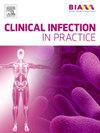季风驱动的传染病动态:气候决定因素、爆发模式和公共卫生影响
Q3 Medicine
引用次数: 0
摘要
季风降雨通过水文、媒介生态学和人与环境相互作用的变化,推动传染病传播的实质性变化。湿度升高、洪水泛滥和水滞滞创造了有利于病原体传播的条件,如霍乱弧菌、钩端螺旋体以及由伊蚊和库蚊传播的虫媒病毒。由于过度拥挤和季风引起的流离失所期间空气质量受损,呼吸道病毒和侵袭性真菌感染也有所增加。气候阈值,包括海面温度、相对湿度和降雨异常,与流行病高峰密切相关。气候变化导致的季风变动性加剧改变了这些疾病的地理、季节性和负担,挑战了现有的公共卫生模式,并要求建立综合气候病原体监测系统。本文章由计算机程序翻译,如有差异,请以英文原文为准。
Monsoon-driven dynamics of infectious diseases: Climatic determinants, outbreak patterns, and public health implications
Monsoon rainfall drives substantial shifts in infectious disease transmission through changes in hydrology, vector ecology, and human-environment interactions. Elevated humidity, flooding, and water stagnation create conditions that favor the propagation of pathogens, such as Vibrio cholerae, Leptospira interrogans, and arboviruses transmitted by Aedes and Culex mosquitoes. Respiratory viruses and invasive fungal infections also increase owing to overcrowding and compromised air quality during monsoon-induced displacement. Climatic thresholds, including sea surface temperature, relative humidity, and rainfall anomalies, correlate strongly with epidemic peaks. Intensifying monsoon variability due to climate change alters the geography, seasonality, and burden of these diseases, challenging existing public health models and demanding integrated climate-pathogen surveillance systems.
求助全文
通过发布文献求助,成功后即可免费获取论文全文。
去求助
来源期刊

Clinical Infection in Practice
Medicine-Infectious Diseases
CiteScore
2.10
自引率
0.00%
发文量
95
审稿时长
82 days
 求助内容:
求助内容: 应助结果提醒方式:
应助结果提醒方式:


